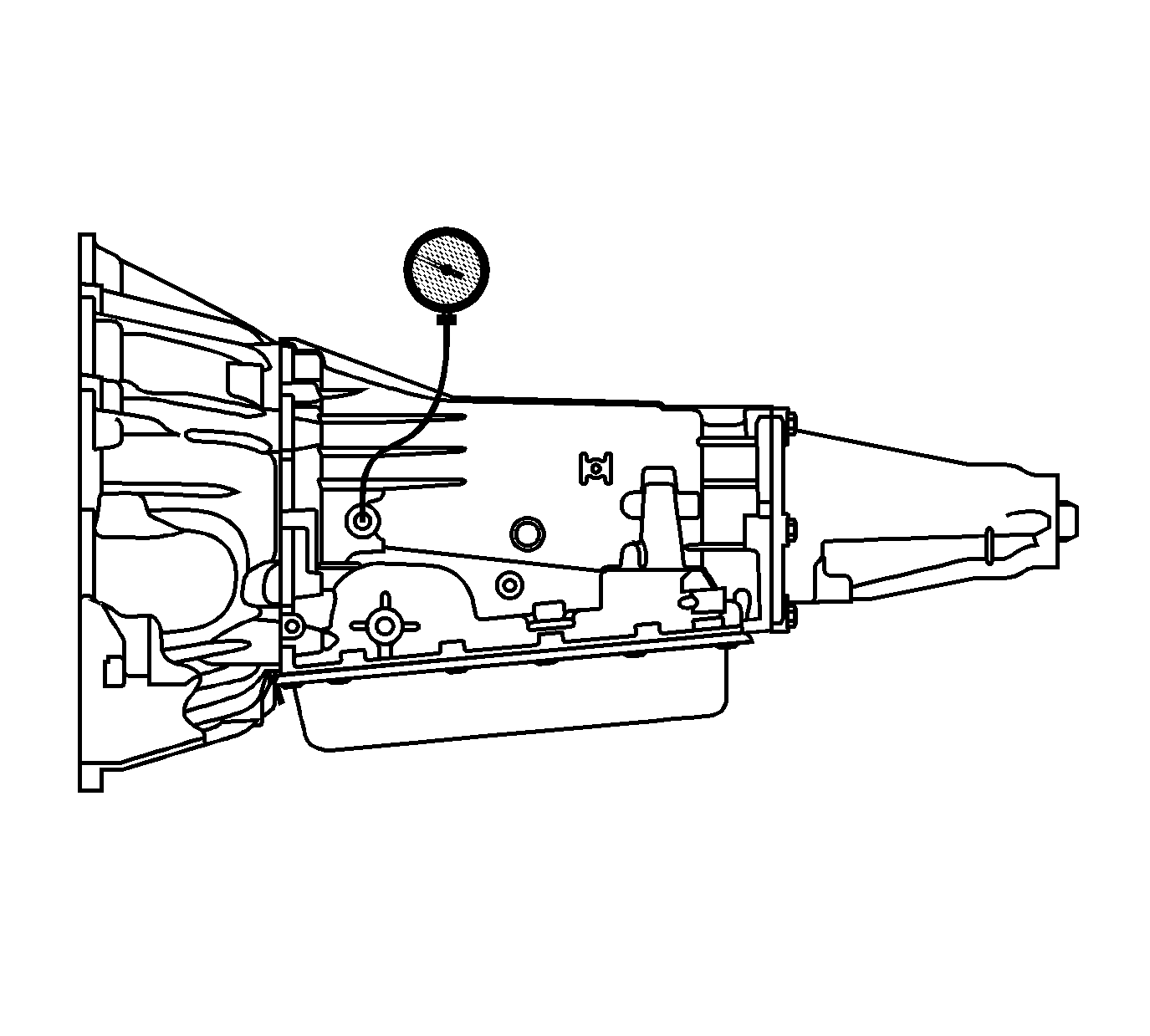Line Pressure Check M30/M32

Tools Required
J 21867 Pressure Gage
- Install a scan tool.
- Start the engine.
- Inspect the transmission for the proper fluid levels. Refer to Transmission Fluid Check .
- Use the scan tool to inspect for any active or stored diagnostic trouble codes.
- Inspect the manual linkage at the transmission for proper function.
- Turn the engine OFF.
- Remove the pressure plug.
- Install the J 21867 .
- Access the Scan Tool Output Control for the PC Solenoid.
- Start the engine.
- Begin commanding PC Solenoid at 1.0 amp and lower the amperage in one-tenth increments (0.01) until maximum line pressure is achieved.
- Allow the pressure to stabilize between increments.
- Compare your pressure readings to the Line Pressure table. Refer to Line Pressure .
- If the pressure readings vary greatly from the line pressure table, refer to Oil Pressure High or Low .
- Turn the engine OFF.
- Remove the J 21867 .
- Install the pressure plug.
Caution: Keep the brakes applied at all times in order to prevent unexpected vehicle motion. Personal injury may result if the vehicle moves unexpectedly.
Important: Before performing the line pressure check, verify that the transmission pressure control (PC) solenoid is operating correctly.
Important: It may be necessary to remove or disconnect components in order to gain access to the transmission line pressure test port/plug.
Important: In order to achieve accurate line pressure readings, the following procedure must be performed at least three times in order to gather uniform pressure readings.
The scan tool is only able to control the PC solenoid in PARK and NEUTRAL with engine speeds below 1500 RPM. This protects the clutches from extreme high or low line pressures.Notice: Refer to Fastener Notice in the Preface section.
Tighten
Tighten the pressure plug to 8-14 N·m
(6-10 lb ft).
Line Pressure Check M33 Only

Tools Required
J 21867 Pressure Gage
- Inspect the transmission for proper fluid level. Refer to Transmission Fluid Check .
- Install a scan tool.
- Start the engine.
- Use the scan tool to inspect for any stored or active diagnostic trouble codes. Make necessary repairs.
- Turn the engine OFF, with the ignition ON.
- Remove the pressure plug from the line pressure test port.
- Install the J 21867 to the line pressure test port.
- Access the scan tool output control for the secondary fluid pump relay.
- Command the relay ON.
- Record the maximum pressures achieved.
- Secondary fluid pump pressure should be 110-275 kPa (16-40 psi).
- If the secondary fluid pump pressures vary greatly from the specifications, refer to High or Low Secondary Fluid Pump Pressure .
- Remove the J 21867 .
- Install the pressure plug.
Important: Before performing the line pressure check, verify that the secondary fluid pump and pump relay are operating correctly.
Important: It may be necessary to remove or disconnect components in order to gain access to the transmission line pressure test port/plug.
Notice: The secondary fluid pump assembly must be operated only when adequate automatic transmission fluid supply is present. Failure to do so may permanently damage the pump.
Important: In order to obtain acceptable secondary fluid pump pressure readings, it is recommended that several readings be taken.
Notice: Refer to Fastener Notice in the Preface section.
Tighten
Tighten the pressure plug to 8-14 N·m (6-10 lb ft).
